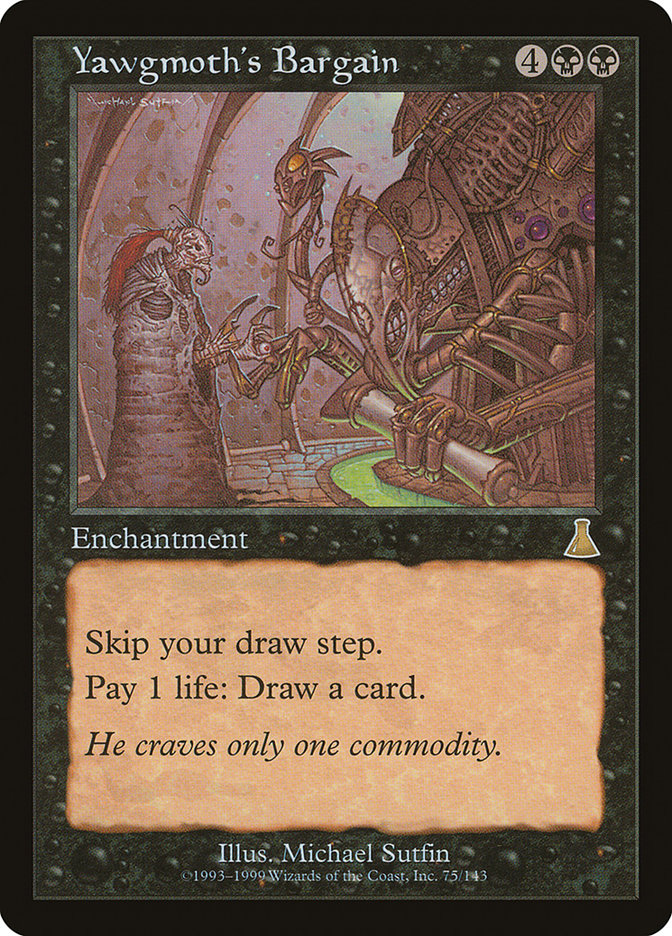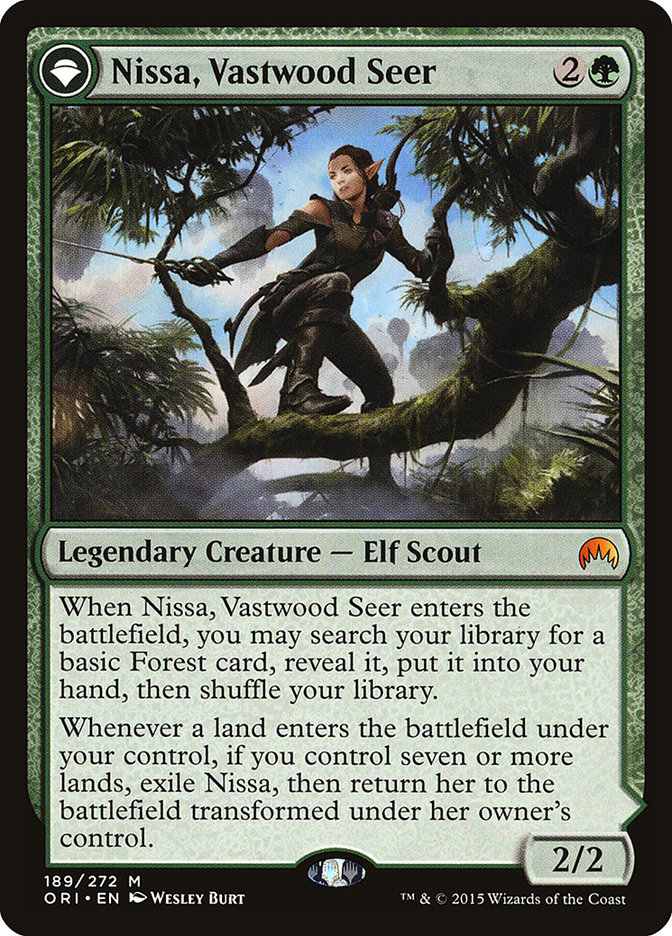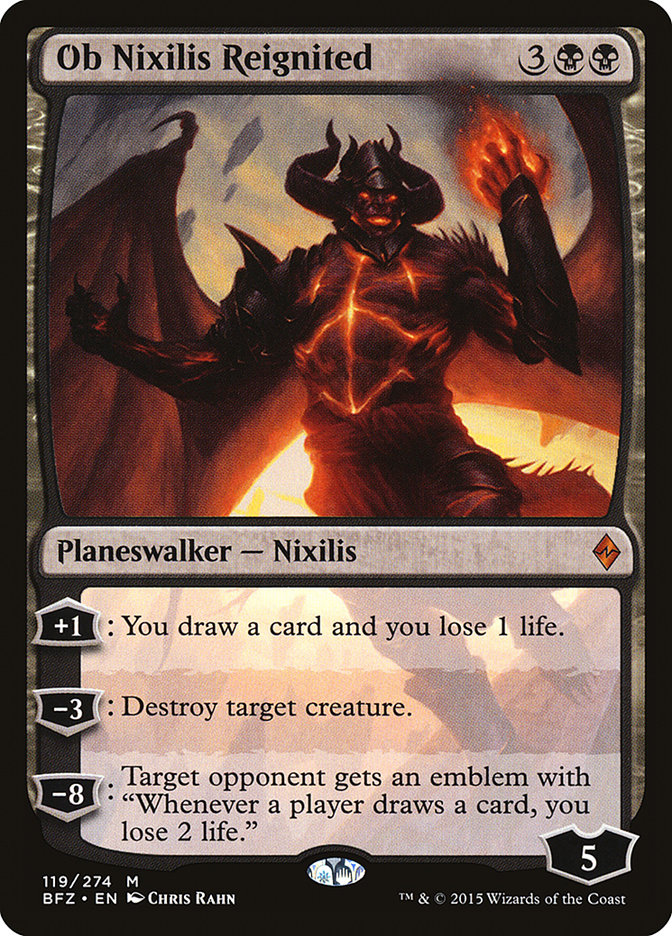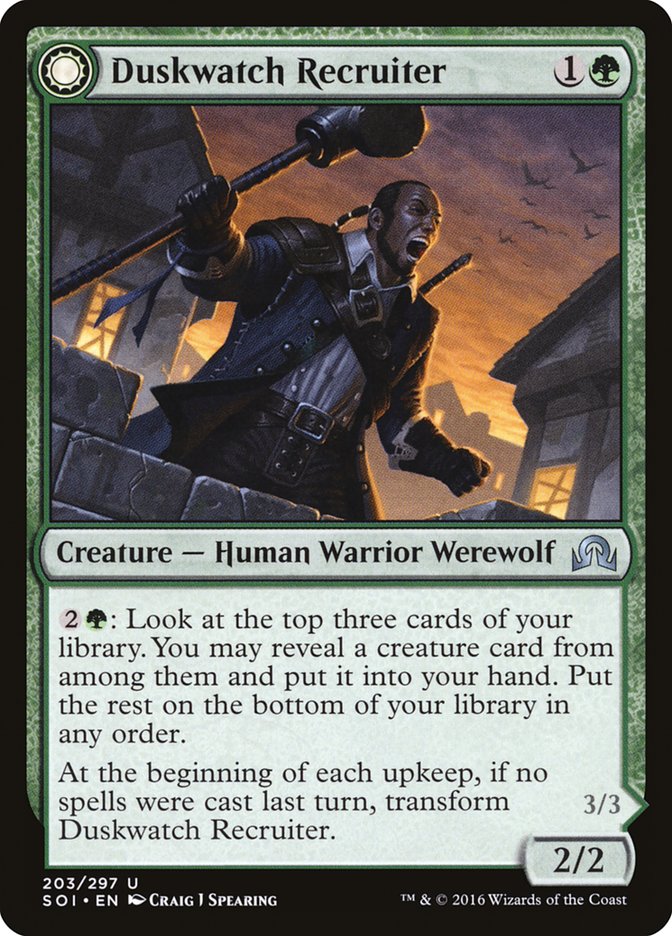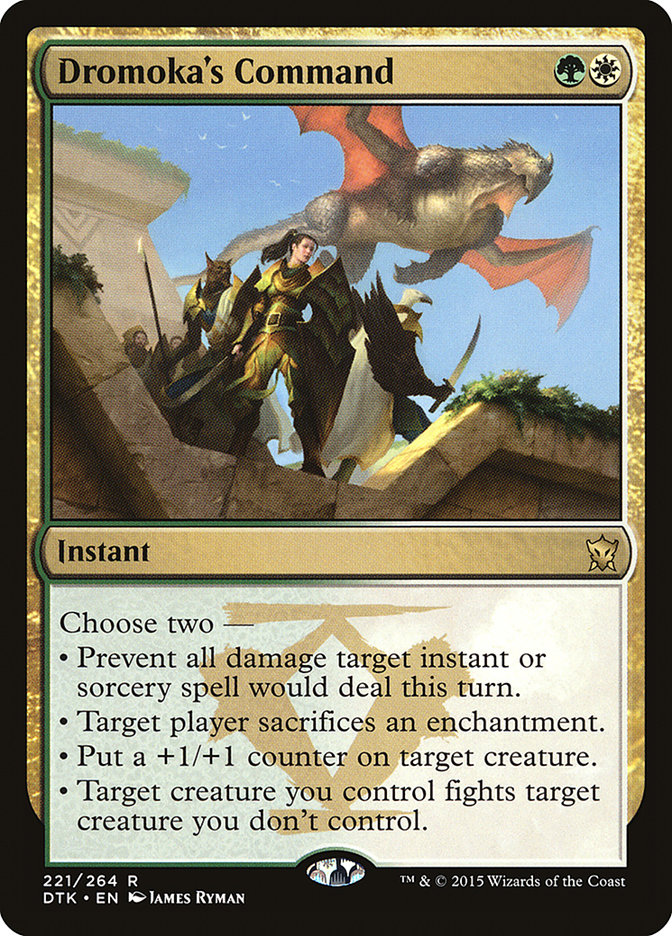What are some of the metrics we use to decide what is important in a game of Magic? Frequently we talk about card advantage or tempo in Magic theory as means to dictate interactions and various types of exchanges.
For the most part, these ideas are rooted in the past, when Magic was a vastly different game. Traditional card advantage is largely a relic, and there are only a few instances in the past several years (Sphinx’s Revelation comes to mind) where brute-forcing an opponent by drawing a glut of cards was a viable strategy.
Simply, Magic has moved in a different direction. In many ways, creatures represent multiple cards either directly through enters-the-battlefield triggers or their abilities. Getting on the battlefield is the most important part of Standard, especially as generating a position is the best way to stay ahead.
Specifically, a diversification of permanents is often the best way to make sure that an aggressively slanted deck is able to secure an advantage, as it is difficult to impossible to answer multiple types of cards simultaneously in a clean manner.
For example, if one were to look at a game where G/W Tokens has a Sylvan Advocate; Gideon, Ally of Zendikar; and Evolutionary Leap all working in tandem, every turn where their cards reign supreme creates a snowball effect, as their opponent is forced to deal with more creatures, cards, and raw aggression, despite the fact that these are simply permanents on the battlefield.
I’ve seen other content producers, commentators, and myself use the term “gaining traction” as a means to describe what is happening in a game of Magic when a player is able to cement their position. That being said, what does it really mean? How can we apply the knowledge of how cards work most effectively in the broader sense to making good in-game decisions?
Gerry Thompson did a lot of the ground work in his piece Interaction Advantage. Many of his examples discuss the idea that “incidental pieces of cardboard” lying around become much more impactful in the grand scheme of things when you look beyond the fact they are a “2/2” and look at how the games played out.
Nissa, Vastwood Seer might simply be a 2/2 for several turns, but when it prevents an opponent from casting Ob Nixilis Reignited and killing your largest creature for fear that she will attack it down, suddenly your opponent doesn’t have the option of generating traction with that Ob Nixilis. This is a huge constraint on how your opponent can play the game. Suddenly they are given a difficult choice instead of having free rein to build their position.
Just as Gerry pointed out, planeswalkers are a big deal. They are the most dramatic type of permanent for illustrating the effects of traction in a game. Quite simply, having a planeswalker on the battlefield for more than one turn is a lot better than it dying immediately. Every turn that you can protect it means that you are generating some form of card advantage without using any mana. Most Constructed-playable planeswalkers have some means to protect themselves, and as a result the games get quickly out of hand for an opponent when you have a diverse battlefield position of a planeswalker ticking up and creatures pressuring or defending.
“Bad Right Now”
When we say “Gideon, Ally of Zendikar is bad right now,” it isn’t like the card’s text has changed. It’s that the context of the format has made it difficult to generate traction with Gideon. If there are frequently a bevy of flying creatures or Collected Company (sound familiar?) infesting the format, it is difficult to rely on Gideon surviving through the average turn 4, and as a result it isn’t a card that is as attractive to play.
Creatures (27)
- 4 Reflector Mage
- 4 Sylvan Advocate
- 2 Archangel Avacyn
- 3 Tireless Tracker
- 3 Duskwatch Recruiter
- 3 Thalia, Heretic Cathar
- 4 Spell Queller
- 4 Selfless Spirit
Lands (25)
Spells (8)

Speaking of Collected Company, there’s no better way to illustrate traction through creatures than the dominance of Bant Company. What is it that makes Bant Company good? Of course there’s the namesake Collected Company, which gives the deck explosive power and the means to play at instant speed, but a heavily devoted creature deck is truly only going to be as good as the creatures it plays, especially when the deck isn’t entirely built for brutal speed and aggression but rather for resiliency.
Bant Company is ridiculous at building traction and then leveraging it. Take a look at Duskwatch Recruiter and Tireless Tracker.
We now know how easy it is to get buried under these two creatures in longer games and how threatening these creatures are even early. Any game where Bant Company is simply offered reprieve represents a situation where either of these two built-in card advantage engines can run wild in a game.
Bant Company can easily overpower “bigger” decks due to its ability to draw cards through its creatures. Further, this gives it the distinct advantage against other creature decks that are unable to quickly kill it. They have largely been pushed out of the format by Bant Company because, again, Bant Company is so good at generating traction.
The Importance of Sizing
Sizing has been yet another often-discussed element of Standard and for good reason. There is an “extra” point of toughness on many of Bant Company’s creatures, like Sylvan Advocate and Reflector Mage, and in general I think this is a heavily underrated strength of the deck. Bant Company is quickly able to achieve parity on the battlefield because it is good at generating so many creatures and creating battlefield stalls. When you have so many 2/3s (or 4/5s), it becomes incredibly difficult for an opponent to justify an attack into a line of double-blocks, and then what happens?
They are forced to find another route of attack while Bant Company is given the time and has generated the traction it needs to activate Duskwatch Recruiter and Tireless Tracker – and you know where the game goes from there.
Speaking of Reflector Mage, there’s basically no better creature for generating traction – as I just mentioned, it is an incredibly relevant body, but it puts Bant Company ahead on the battlefield and keeps it that way through an entire turn cycle.
What Do We Do with an Understanding of Traction?
To keep things practical, what does this mean for the way in which we play the games or build our decks? Having an understanding of your role remains important. This is a general baseline for how to dictate what pieces of cardboard on the battlefield are vital and how to manage them. A matchup might simply be have having to “avoid dying” before your engines are able to take over the game, or it may be about managing the battlefield until you can comfortably get a foothold and stick some powerful permanents.
Evaluating what is necessary to “get out of your cards” in terms of when to sequence them is especially critical for planeswalkers. Depending on context, it can be correct to play that Ob Nixilis Reignited into its death by Nissa, Vastwood Seer, but there are many more situations where it is important to “set it up” over multiple turn sequences or with preemptive removal spells.
Having the ability to recognize how your opponent may trump you for control over the battlefield is crucial. One of the best examples I can remember was trying to lead my opponents into situations with G/W Tokens and Megamorph where I could kill their creature with Dromoka’s Command and my Hangarback Walker, allowing it to “pop” and basically ensure my opponent could never stick a planeswalker profitably to gain traction.
Understanding these common play patterns is pivotal to playing games where you aren’t constantly far behind and can start to gain traction with your cards. These are some of the hardest games to play where you are forced to pace your spells appropriately in the face of perceived threats but also not falling too far behind on the battlefield should your opponent not have what you’re playing around.
The Root of All Strategy
At the root of all this, really, is mana. It’s why planeswalkers are so powerful – a one-turn investment can lead into a huge windfall of advantage given the proper care. It’s also what dictates the bottleneck on powerful repeat abilities. In general, despite the fact that folks are generally getting better about this in deck building…play with more lands. Playing 25 and 26 lands really should be the norm for Standard. The cards are so powerful and punishing that not only is simply getting mana screwed worse than it’s ever been in terms of just playing a normalized game on curve, but flooding is such a joke these days. There are multiple decks in several situations where “all you want to do” is draw a land every turn of the game. If you have either of the aforementioned duo of Tireless Tracker and Duskwatch Recruiter, or Evolutionary Leap, then all you need is more mana.
I’ve “jokingly” always said that I love Nissa, Vastwood Seer and want to put her in all my decks (you may also notice a trend of green having all the best card advantage creatures), but the reason hadn’t entirely come together until recently.
Nissa generates traction on the battlefield, is a bridge into the middle of the game (which enables more resources for the green deck moving forward), and is a huge threat for functionally no mana investment later that exploits any traction you’ve been able to generate, especially when Ashaya is a “free” way to protect her. These things are not only all true, but she cleanly draws an extra card (or better) every turn before eventually ending the game.
Essentially, Nissa creates a relevant impact on the game early before warping the entire game to be about her. This is a huge implication that is important to recognize, and despite the fact that she is quite unique in being a flip-planeswalker, her significance is something to be noted for future evaluation.
To Summarize
Card advantage is typically produced in the modern era of Magic through repeat sources like abilities and planeswalkers.
Creating traction to get the battlefield to at least parity is largely how these engines are able to get online.
As a result, whether you use these types of engines largely dictates whether you are the aggressor in the matchup and whether you should be pushing to end the game. Similarly, it defines whether you should be trading off battlefield position.
Learning common sequences is critically important for planeswalker battles in particular. Exposing them to high risk for a single activation heavily diminishes their value.
Decks being mana-hungry is a common trend in Standard these days. Play with more and take it into account for not only your maindeck but sideboard configurations as well!
Next week I’ll be back after the Pro Tour to share a wealth of failures and findings. With 40% of the field last week in #SCGBALT and a huge selection of the examples in this article, I can only hope that the Bant Company menace is beatable!


